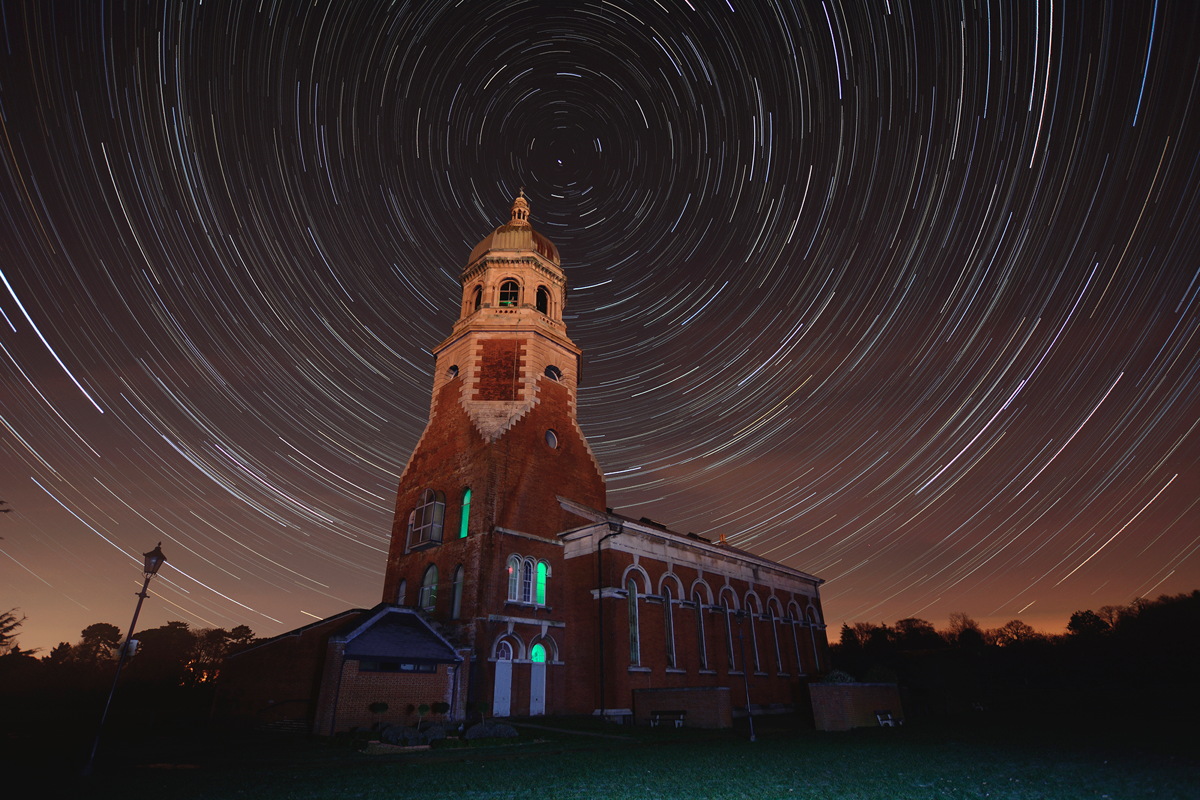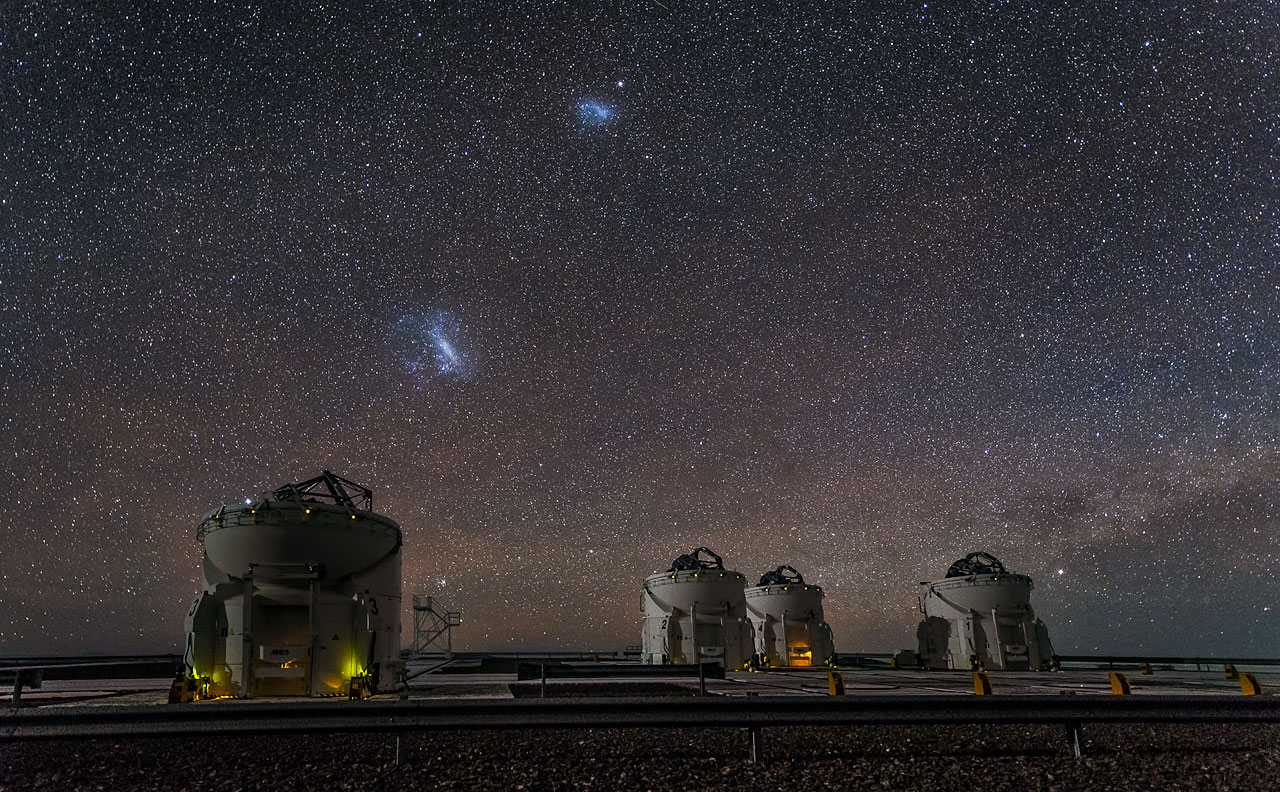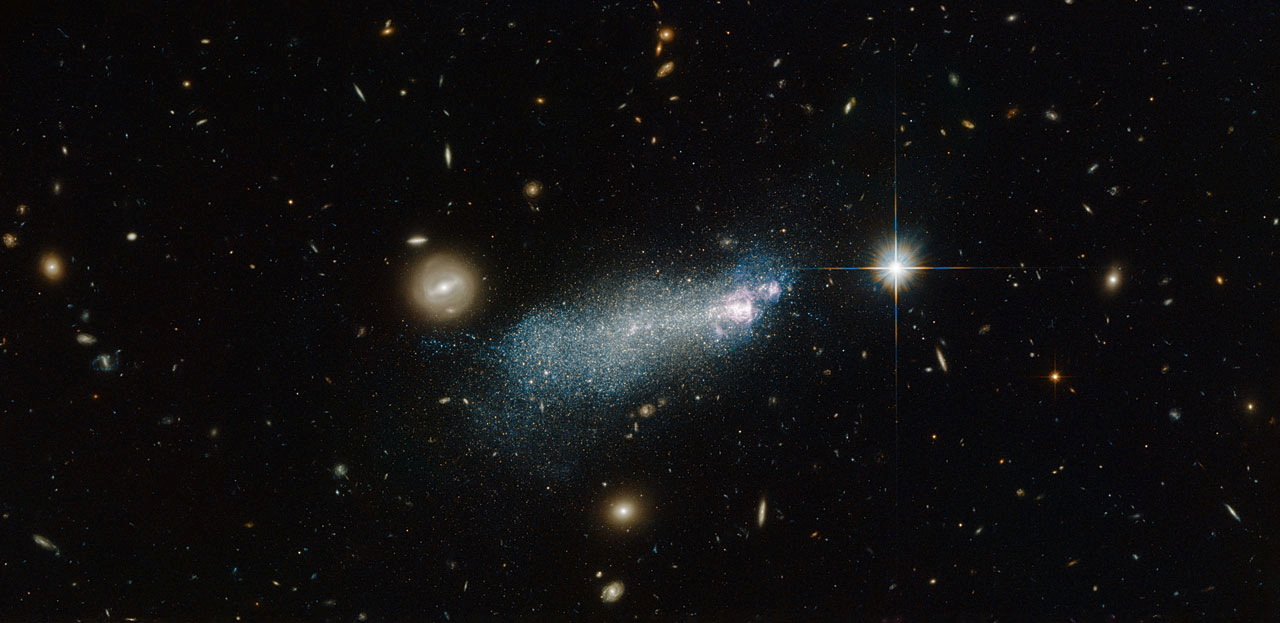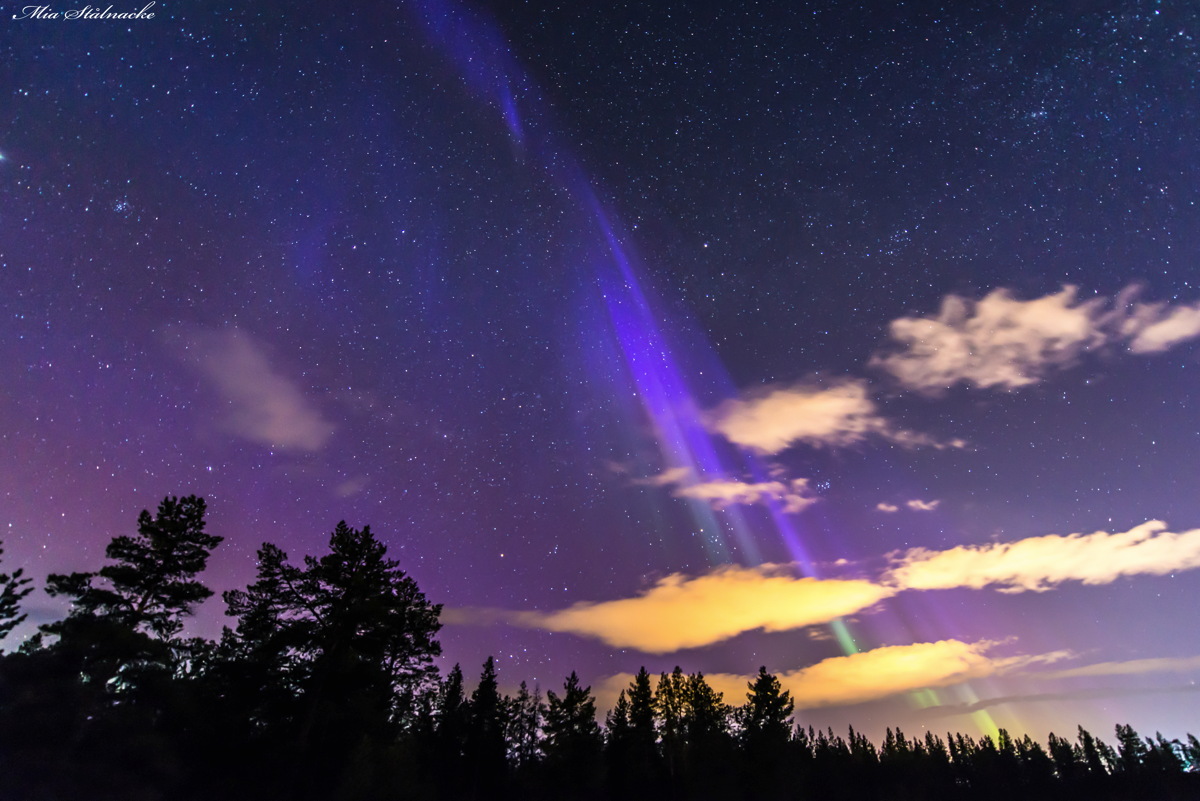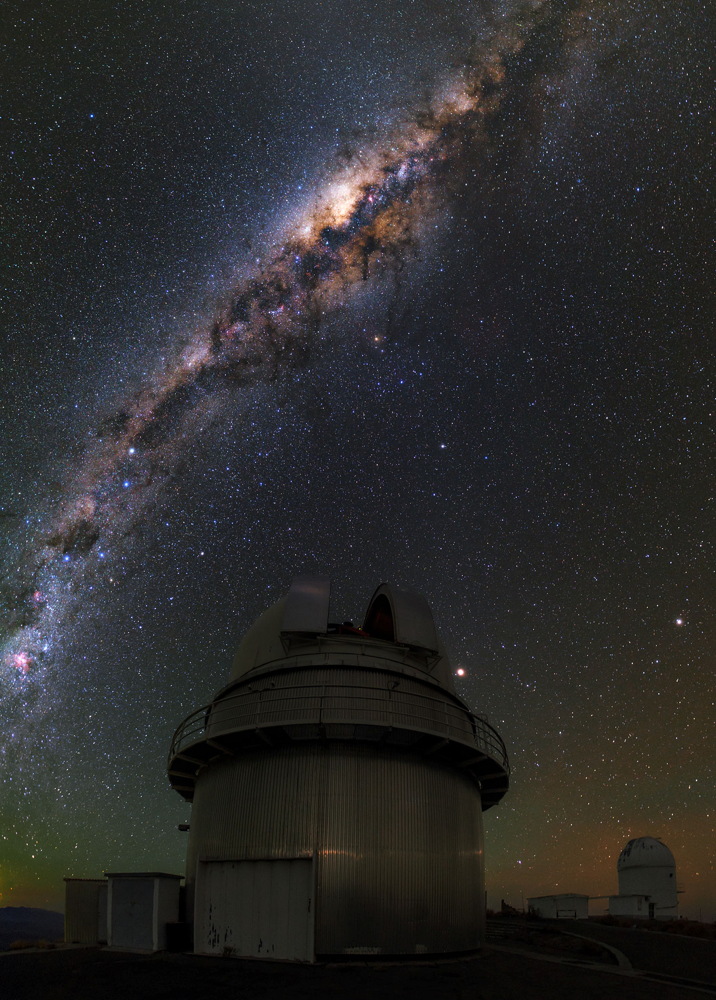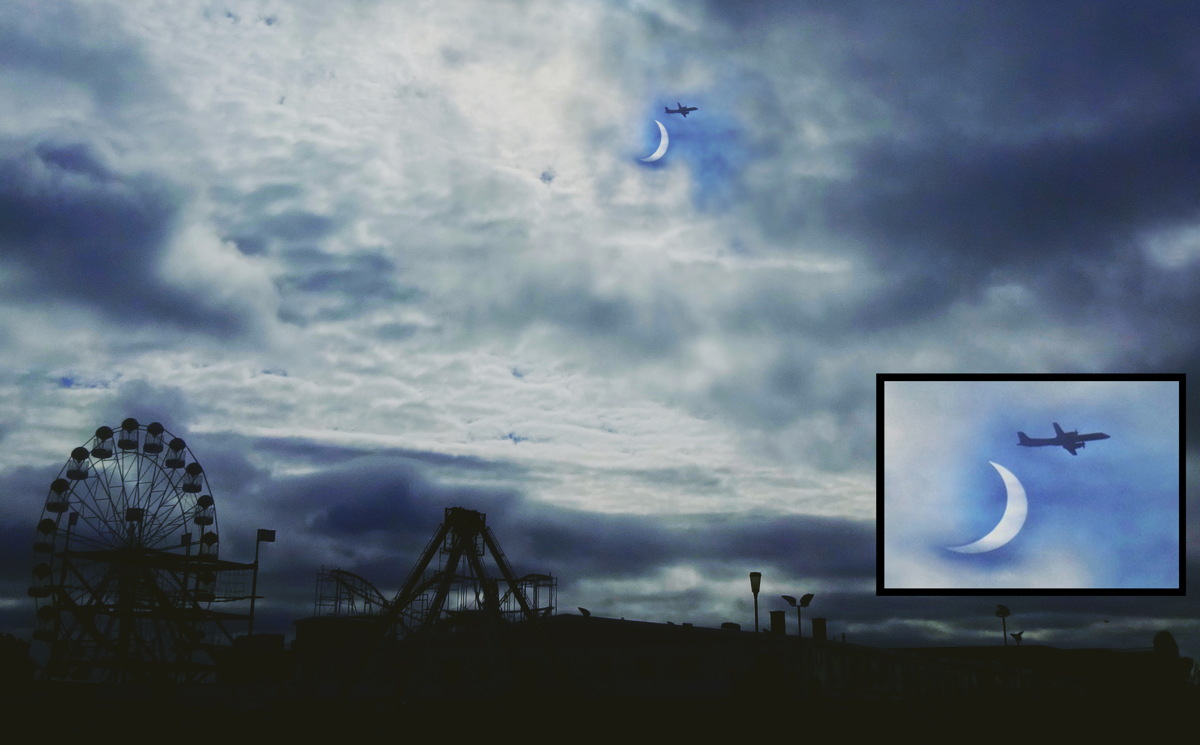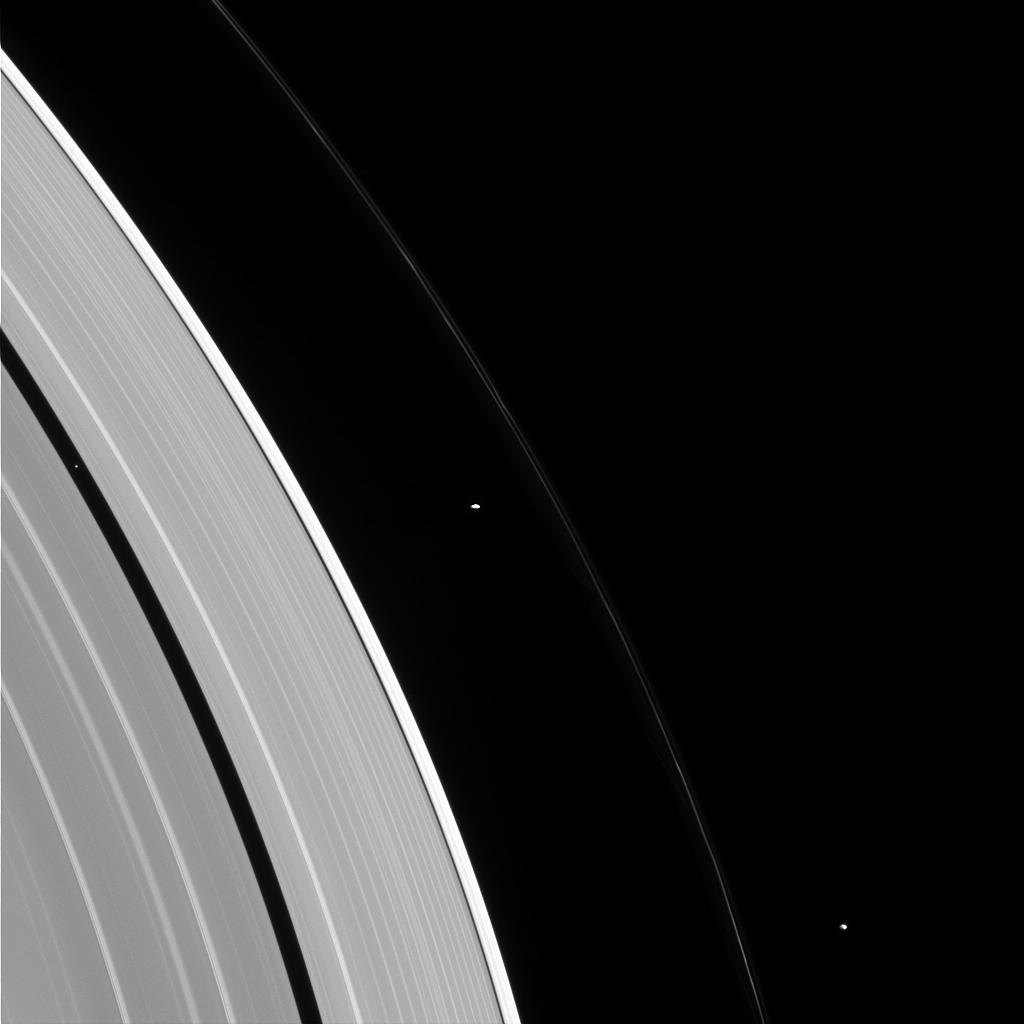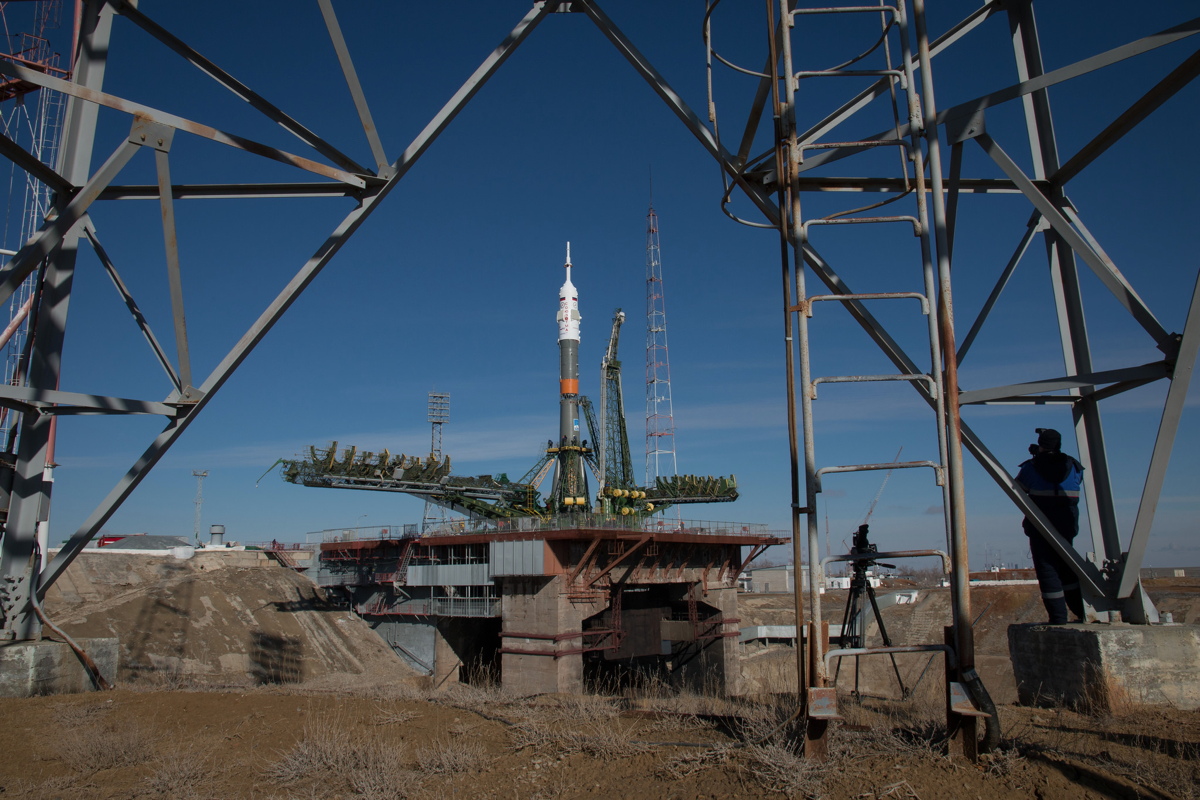Space Image of the Day Gallery (March 2015)
Echoes of the Past
Monday, March 16, 2015: Astrophotographer Connor Hicks submitted a photo of star trails over the
The Telescopes
Tuesday, March 17, 2015: The four Auxiliary Telescopes of the Very Large Telescope Array stand against an star-filled night sky on Cerro Paranal in Chile, at ESO’s Paranal Observatory. The Auxiliary Telescopes each measure 6 feet (1.8 meters) in diameter. Above the site, the Small and Large Magellanic Clouds hang prominently, visible only in the southern sky. These two irregular dwarf galaxies make up part of the Local Group, being companion galaxies to our own galaxy, the Milky Way. John Colosimo took the photo and submitted it to the Your ESO Pictures Flickr group. Image released March 16, 2015.
— Tom Chao
Blue Compact Dwarf Galaxy PGC 51017
Wednesday, March 18, 2015: This NASA/ESA Hubble Space Telescope image shows blue compact dwarf galaxy PGC 51017, also known as SBSG 1415+437. Astronomers had thought that SBS 1415+437 represented a very young galaxy undergoing its first burst of star formation, but more recent studies have suggested that the galaxy has passed that stage, containing stars over 1.3 billion years old. In fact, it seems like our nearby region of the universe may not contain any galaxies currently undergoing their first burst of star formation.
— Tom Chao
Rare Blue
Thursday, March 19, 2015: Astrophotographer Mia Stålnacke sent in a photo of an auroral display over of Kiruna, Sweden, taken on March 17, 2015. She writes in an email message to Space.com: "Last night was, as you know, spectacular! … I've been shooting the aurora for years now but last night topped everything else! For the first time ever I managed to catch the blue aurora!" Ionized nitrogen molecules in the atmosphere emit the blue color when regaining an electron after ionization.
— Tom Chao
Red Hot
Friday, March 20, 2015: The north polar region of Mercury appears in colors corresponding to the maximum biannual surface temperature, ranging from >400 K (red) to 50 K (purple). Being the closest planet to the sun, Mercury can attain high temperatures in its sunlit areas, shown by the red color of the majority of the image. However, some craters near Mercury's poles possess regions permanently shadowed, and the maximum temperatures in these areas can dip down very low.
— Tom Chao
Danish Modern
Monday, March 23, 2015: The Milky Way shines above the dome of the Danish 1.54-meter telescope that has operated at La Silla Observatory in Chile since 1979.
— Tom Chao
Splendid Isolation
Tuesday, March 24, 2015: Spiral galaxy NGC 5023 appears edge-on to the Hubble Space Telescope. This galaxy lies over 30 million light-years away, and it makes up part of the M51 group of galaxies. NGC 5023 is relatively isolated from the group’s other galaxies. Image released March 23, 2015.
— Tom Chao
Breaking space news, the latest updates on rocket launches, skywatching events and more!
'Hidden in Plane Sight'
Wednesday, March 25, 2015: Astrophotographer Daniel Mackintosh sent in a photo of the March 20, 2015, solar eclipse taken over Aberdeen Beach, Scotland. He writes in an email message to Space.com: "I had such a great time down at Aberdeen Beach watching the eclipse and the excitement was only amplified when I luckily caught this snap of a plane passing by the eclipse." The Grampian Eye ferris wheel appears at left. [See more photos of the eclipse.]
— Tom Chao
Good Shepherd
Thursday, March 26, 2015: Cassini spacecraft caught Saturn's moons (R to L) Pandora, Prometheus, and Pan floating among the planet’s rings. Some moons can shape nearby rings with gravity, keeping the rings’ edges from spreading, "shepherding" them, so to speak. Pan shapes and controls the locations of the inner and outer edges of the Encke gap. However, researchers have yet to determine what effect Prometheus and Pandora have on the F ring's configuration. Cassini spacecraft obtained the image in visible light on Jan. 2, 2015. Image released March 23, 2015.
— Tom Chao
Ready to Soar
Friday, March 27, 2015: A photograph shows the Soyuz TMA-16M spacecraft as seen through metal beams after the vehicle rolled out by train to the launch pad at the Baikonur Cosmodrome, Kazakhstan, on March 25, 2015. The rocket will carry NASA astronaut Scott Kelly with Russian cosmonauts Mikhail Kornienko and Gennady Padalka of the Russian Federal Space Agency (Roscosmos) to the International Space Station on the scheduled launch date of March 28, 2015. Kelly and Kornienko will return to Earth in March 2016 after a full one-year stay in space. [Watch the launch live.]
— Tom Chao
